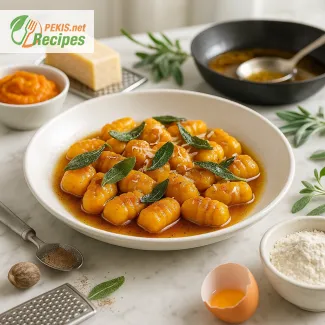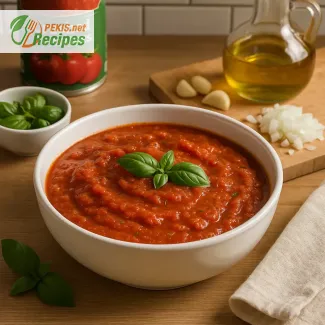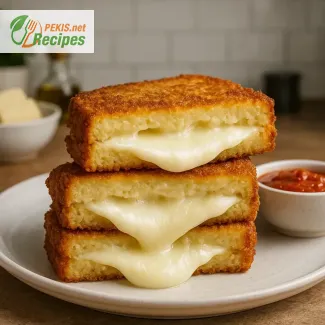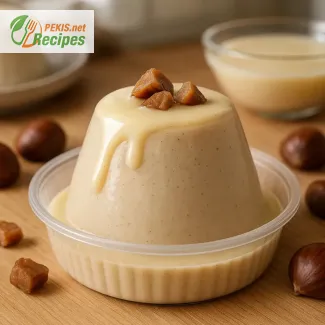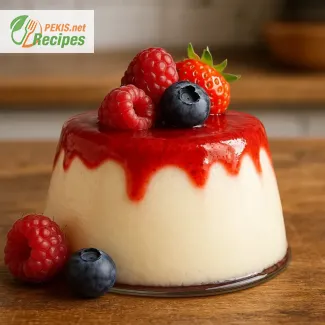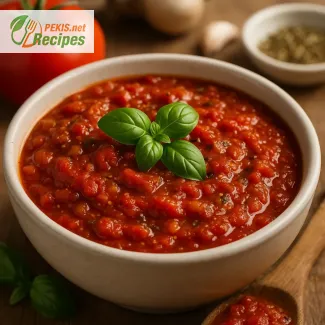
Discover the Secrets to Fresh, Creamy Ricotta You Can Make at Home
A culinary journey to the heart of Italian cheesemaking
There’s something undeniably magical about transforming a few simple ingredients into a luxurious, velvety cheese in the comfort of your own kitchen. Homemade ricotta cheese isn't just a kitchen project—it’s an experience that taps into tradition, evokes rustic Italian countryside flavors, and rewards you with a taste that far surpasses any store-bought version. This article will guide you through the sensory beauty of fresh ricotta, its role in classic dishes, and why it’s become a staple in both professional and home kitchens alike.
The word ricotta comes from the Latin recocta, meaning “recooked,” referring to the traditional method of making it from reheated whey. While today's homemade ricotta recipes often use whole milk instead, the result is still a light, creamy, and subtly sweet cheese that adds depth to savory and sweet recipes alike. From lasagna to cannoli, ricotta plays a quiet yet transformative role in many of the world’s most beloved dishes.
What sets homemade ricotta apart is not only its freshness but the customizability of texture and richness. Whether you prefer a thick spreadable cheese for crostini or a lighter, fluffier version for desserts, making it at home gives you full control. Plus, there’s a unique satisfaction in watching curds gently separate, turning simple milk into a beautiful bowl of warm, pillowy cheese within minutes.
If you've never tried to make cheese before, ricotta is the perfect introduction. It requires no special equipment, no aging, and very little time. In just about half an hour, you can create a luxurious ingredient that elevates everything from pasta dishes to cheesecakes. It’s also an ideal way to use up milk that’s nearing its expiration, reducing waste while delivering something delicious.
Why homemade ricotta is a must-have in your kitchen
Ricotta cheese is far more than just a filler in stuffed shells or a topping for toast. It carries a light tang and creamy consistency that works harmoniously with both sweet and savory ingredients. When freshly made, it has a delicately warm and milky aroma, and the texture is nothing short of exquisite—silky yet substantial.
Cooking enthusiasts appreciate ricotta’s versatility and simplicity. It’s a chameleon in the kitchen: fold it into pancake batter for a pillowy rise, spoon it over roasted vegetables, or whisk it with honey and lemon zest for an effortless dessert. It also serves as a neutral canvas, perfect for infusions of herbs, spices, and citrus that can turn it into a signature element of your personal cooking style.
Perhaps most importantly, making ricotta at home is an invitation to slow down and connect with the food you eat. The gentle heating, the stirring, the curdling—it’s a process that reminds us of the roots of traditional cooking, where ingredients were valued and nothing was wasted. The result is not only a delicious cheese, but a renewed appreciation for the transformation of the everyday into the extraordinary.
What makes this ricotta recipe unique
Unlike many recipes that rely on pre-made components or shortcuts, this ricotta cheese recipe brings everything back to basics. With just a few core ingredients—milk, an acid like lemon juice or vinegar, and salt—you’ll witness the pure alchemy of home cheesemaking.
Another distinctive aspect is that you can adjust the flavor and texture depending on your needs. Want a drier ricotta for baking? Let it drain a bit longer. Prefer a softer cheese for spreading? Cut the draining time short. This recipe also lends itself to flavor enhancements: try adding fresh thyme, crushed pepper, or roasted garlic for a savory twist.
And let’s not forget the sense of accomplishment. Once you’ve made your own cheese, you’ll gain a new level of confidence in the kitchen. You may even find yourself experimenting with other fresh cheeses like paneer, mascarpone, or farmer's cheese, diving deeper into the world of dairy-based delights.
Ricotta’s rich history and timeless appeal
Ricotta cheese has roots that trace back thousands of years to ancient Roman times. Traditionally crafted from the leftover whey of other cheeses, it was an ingenious solution to food waste and a testament to resourceful, artisanal cooking. In Italy, ricotta is often made on farms and in homes, where it’s used in a variety of regional dishes, each reflecting the local flavor profile and culinary traditions.
From Sicily to Tuscany, ricotta finds its way into everything from cassata and sfogliatelle to savory pies and rustic breads. This speaks to the universal charm of ricotta—it fits seamlessly into comfort food while maintaining a certain elegance and delicacy.
Today, chefs and home cooks alike continue to honor this legacy, making homemade ricotta as a way to reconnect with slow food values and a sense of culinary heritage. And thanks to its mild taste and soft consistency, ricotta is embraced worldwide by people of all ages and dietary preferences.
Your gateway to elevated cooking
Whether you're planning a cozy family dinner or crafting an elevated brunch menu, this recipe opens the door to countless creations. Think beyond the usual dishes—ricotta can be baked into soufflés, blended into smoothies, stirred into soups, or enjoyed as-is with a drizzle of olive oil and fresh herbs.
Starting with this recipe, you’ll gain more than just a delicious ingredient. You’ll discover how accessible and rewarding it can be to make your own cheese, how flavors can be amplified by freshness, and how the simplest dishes often bring the most joy. You don’t need to be a professional chef or own a commercial kitchen—just a love for good food and a little curiosity.
In the following section, you’ll find the step-by-step instructions to make your own homemade ricotta cheese, complete with tips to ensure the perfect consistency every time. But before you begin, take a moment to appreciate the journey you're about to embark on—because once you've tasted the richness of fresh, warm ricotta made by your own hands, there's simply no going back.
- Heat the milk: Pour 2 liters (8 ½ cups) of whole milk into a large, heavy-bottomed pot. Place over medium heat and slowly warm the milk until it reaches 85°C (185°F). Stir occasionally to avoid scorching on the bottom.
- Add the acid: Remove the pot from heat. Add 60 ml (4 tbsp) of fresh lemon juice and gently stir for just a few seconds. Let the mixture sit undisturbed for 10–15 minutes. You will see curds begin to form and separate from the whey.
- Drain the curds: Line a fine-mesh sieve with a cheesecloth or clean cotton towel and place it over a large bowl. Carefully pour the curdled milk into the sieve. Let it drain for 10–30 minutes depending on your desired consistency: less for a creamier ricotta, more for a firmer texture.
- Season and serve: Once drained, transfer the ricotta into a clean bowl. Stir in 1 g (¼ tsp) of salt or season to taste. Use immediately or refrigerate in an airtight container for up to 3 days.
Creative Ways to Enhance Homemade Ricotta for Superior Flavor and Texture
From basic to brilliant: turning a simple cheese into a signature ingredient
Homemade ricotta cheese is already a triumph of simplicity and freshness, but what if you could take it a step further? While the base recipe offers a soft, creamy texture and mild flavor perfect for a range of dishes, there are many ways to elevate this traditional delight into something uniquely yours. Whether you're aiming for a richer taste, a healthier alternative, or an artisanal twist, this guide explores expert tips and techniques to enhance homemade ricotta cheese beyond the basics.
Experimenting with different types of milk
One of the easiest ways to improve homemade ricotta is by experimenting with the kind of milk you use. The standard recipe calls for whole cow's milk, which produces a reliable result. However, different types of milk can significantly impact both texture and flavor.
- Goat’s milk results in a slightly tangy ricotta with a more earthy, rustic undertone. It’s ideal for those who prefer a cheese with a bit more personality.
- Sheep’s milk gives a creamier, slightly sweeter ricotta. It’s richer in fat and proteins, which contributes to a luxurious mouthfeel.
- Buffalo milk (where available) produces a velvety, dense ricotta that can rival the finest Italian varieties in depth and complexity.
Keep in mind that milk used should be full-fat and preferably unhomogenized for the best curd formation and creaminess. Avoid ultra-pasteurized milk, which often fails to produce strong curds due to the high heat treatment.
Choosing the right acid and how it changes the final product
Another powerful variable in the ricotta-making process is the acid used to curdle the milk. Each type of acid brings subtle changes in flavor, texture, and aroma.
- Lemon juice offers a gentle citrus note and a light, clean flavor. It’s perfect for ricotta that will be used in desserts or spread on toast.
- White vinegar provides a neutral acidity, leading to a slightly firmer texture. This version is excellent for baking and savory applications.
- Citric acid powder allows precise control over acidity and produces consistent curds. It’s often used in professional kitchens for dependable results.
By adjusting the type and amount of acid, you can customize the balance between creaminess and crumbly firmness, depending on how you intend to use the cheese.
Infusions and flavor enhancements
One of the advantages of homemade ricotta is that it acts as a blank canvas. You can infuse flavor into the milk before curdling or mix ingredients into the finished cheese.
- Fresh herbs such as thyme, rosemary, or chives can be steeped in the milk or folded into the finished product for a savory version.
- Garlic confit or roasted shallots add an aromatic depth that pairs beautifully with bread or vegetables.
- For a sweet variation, try mixing in vanilla bean, orange zest, or cinnamon, turning the ricotta into an elegant topping for pancakes or fruit.
These customizations not only improve the flavor but also allow you to create signature ricotta blends tailored to seasonal dishes or personal preferences.
Why homemade ricotta outshines store-bought versions
There’s a world of difference between fresh, homemade ricotta and the versions available in stores. The most significant advantage is the freshness—homemade ricotta is fluffier, less acidic, and more flavorful. Unlike mass-produced cheese, it doesn't contain stabilizers, preservatives, or excess salt. This makes it:
- More digestible, particularly for those with sensitive stomachs
- Customizable in salt content, ideal for low-sodium diets
- Free from additives, resulting in a clean and natural taste
You also have control over the draining time, which allows you to adjust the moisture level to suit different uses—from creamy ricotta for desserts to firmer versions for stuffing pasta.
Common mistakes and how to avoid them
Even a simple recipe like ricotta has its pitfalls. Here are some frequent errors and tips to avoid them:
- Overheating the milk: Bringing milk to a boil can cause proteins to break down and result in rubbery or gritty texture. Stay just below boiling (around 85°C / 185°F).
- Stirring after adding acid: Once the acid is added, refrain from stirring as it can break the curds apart, resulting in a less cohesive texture.
- Using the wrong cloth: A loose weave will let curds pass through. Use a fine cheesecloth or muslin to ensure a smooth, creamy result.
- Not draining long enough: Impatient draining can leave too much whey, resulting in watery cheese. For firmer ricotta, let it sit undisturbed for up to 30 minutes.
Healthier ingredient swaps
Ricotta cheese is relatively mild and adaptable, which makes it an ideal candidate for health-conscious modifications.
- Reduced-fat milk: Using 2% milk instead of whole milk reduces fat content while still producing decent curds, though the texture may be less rich.
- Plant-based alternatives: For dairy-free diets, a similar curdling technique can be used with soy or almond milk, combined with coagulants like nigari (magnesium chloride) or lemon juice. These versions won’t taste exactly like traditional ricotta, but they offer a creamy and nutritious substitute.
For people monitoring their sodium intake, skip the added salt and season with fresh herbs or spices after draining. You can also blend in cooked vegetables like spinach or pumpkin for added nutrients and a boost in fiber and antioxidants.
Creative uses and next-level presentations
Once you've perfected your ricotta, think beyond traditional recipes. Here are a few gourmet applications:
- Whipped ricotta: Blend with olive oil or Greek yogurt for a velvety spread perfect for toast or crostini.
- Stuffed vegetables: Use as a filling for bell peppers, mushrooms, or zucchini boats, blended with herbs or grains.
- Sweet ricotta parfait: Layer with fresh berries and a touch of honey or maple syrup for a light, satisfying dessert.
- Ricotta gnocchi: Mix with flour and eggs to create pillowy dumplings that are lighter than their potato-based cousins.
These innovations make ricotta not just a component, but the centerpiece of a dish—flexible enough for weekday meals and refined enough for entertaining guests.
Homemade ricotta is far more than a basic kitchen skill—it’s a gateway to culinary creativity. By varying the milk, adjusting the acid, infusing flavors, and avoiding common pitfalls, you can craft a cheese that fits your taste and health preferences while adding elegance and warmth to your meals. Whether you’re preparing a savory appetizer or a delicate dessert, fresh ricotta made with care and curiosity is bound to elevate your kitchen repertoire and become a cherished part of your cooking tradition.
- Contains: Milk (dairy)
- Does not contain: Gluten
- Substitution advice: For dairy-free or vegan alternatives, replace cow’s milk with a plant-based milk high in protein (like soy milk) and use calcium sulfate or magnesium chloride (nigari) as a coagulant. Note: Texture and flavor will differ from traditional ricotta.
- Calcium: 280 mg – supports bone strength and muscular function
- Vitamin A: 300 IU – important for vision and immune health
- Vitamin B12: 1.1 µg – essential for red blood cell formation and neurological function
- Phosphorus: 220 mg – helps with energy production and bone health
- Magnesium: 25 mg – supports muscle function and heart rhythm
- Zinc: 0.9 mg – contributes to immune defense and wound healing
- Glutathione: ~15 mg – supports cellular detoxification and protects against oxidative stress
- Selenium: 8 µg – acts as a defense against cell damage and supports thyroid function
